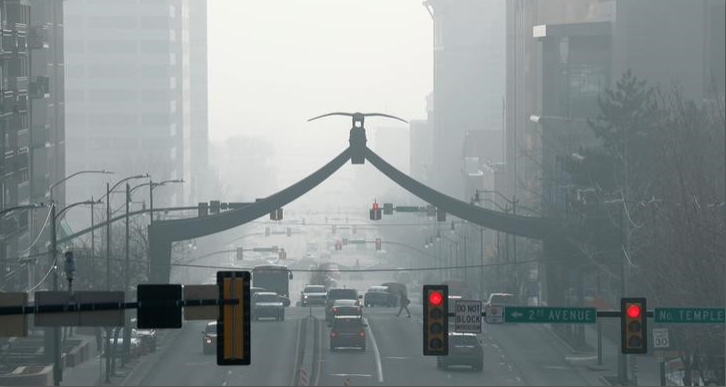
In a new research released by Harvard T.H. Chan School of Public Health on Thursday, it reveals that patients are more likely to die from COVID-19 if they live in areas of the United States with higher levels of long-term air pollution.
Revealing a "large overlap"
Study lead author Francesca Dominici, and co-director of the Harvard Data Science Initiative explained that an increase of only 1g/m3 in fine particulate matter in the air was connected with a 15% increase in the coronavirus death rate.
Defined operationally in this study, high pollution levels are the fine particulate matter (PM 2.5) levels above 13 micrograms per cubic meter of air which is much higher than the US mean of 8.4. Higher levels of these dangerous particles in the air were associated with higher death rates from the infection.
For a couple of weeks, public health officials have inferred that there is a link between dirty air and death or a serious illness caused by the coronavirus.
The Harvard research is the first nationwide study to show a statistical connection which reveals a "large overlap" between deaths of COVID-19 and other diseases related to long-term exposure to fine particulate matter.
According to the paper, if Manhattan had lowered its average particulate matter level by just one microgram per cubic meter over the past 20 years, the area could have lessen the COVID-19 deaths by 248 at this point in the outbreak. Overall, the research provides significant implications for how public health officials choose to allocate medical resources.
Read : "Save it For Younger Ones," Says 90-Year-Old Woman Who Died From COVID-19 After Refusing Ventilators
Fine Particulate Matter
Particulate matter (PM 2.5) generally has a size that is 2.5 micrometers or less, particles that are extremely small, inhalable and cannot be seen with the naked eye. They are also a mixture of solid and liquid particles in the air such as dust, dirt and smoke-which are larger.
Fine particulate matter is really tiny that even an average human hair is 30 times larger than a PM 2.5 particle. Since they are so small, these particles can get into the lungs and cause damages to our lungs and other bodily functions.
More to be done
Balmes, a professor of environmental health sciences at UC Berkeley said that the study also shows more danger from the virus in communities of color.
He added, "The same counties that have the higher air pollution, they also have more poor people, more poor people of color. And it's probably at the neighborhood level that there's the greatest risk."
There is a global need to analyze air pollution's impact on risk levels all over the world. Yifang Zu, UCLA professor in the Department of Environmental Health and Sciences said that the overall difficulties that long-term exposure to PM 2.5 increases the risk of COVID-19 is probably generalizable to a global scale.
The study gives strong evidence to highlight the importance of improving our air quality overall, according to Zhu.
Read also: Lockdown Effect: Impossible View of the Himalayas Captured by Photographers in India After 30 Years
For more updates, like the Science Times page on Facebook or Sign up for our newsletter.












